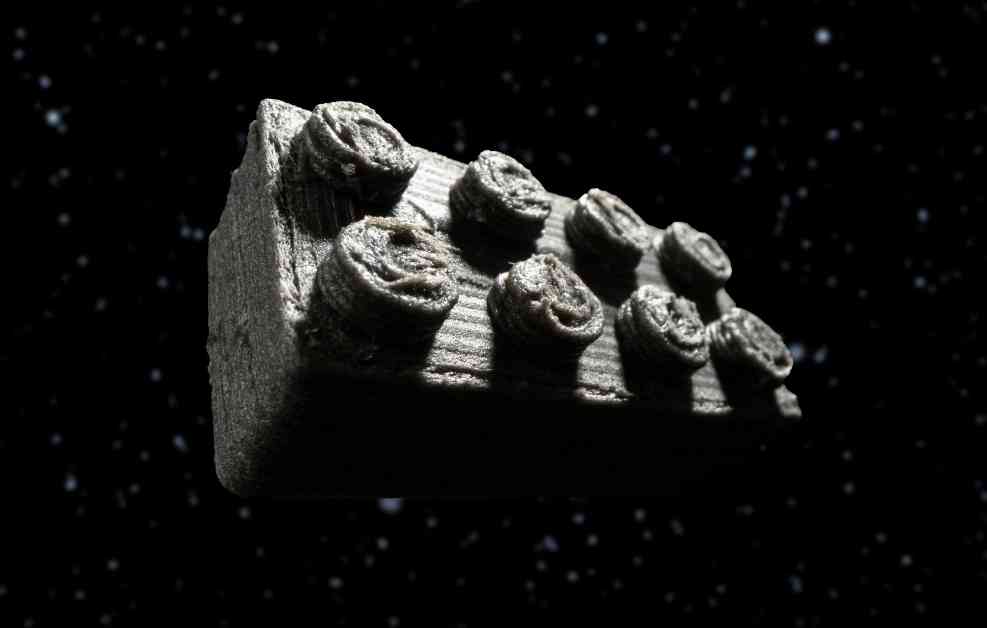Humans seeking to establish settlements on other planets face the challenge of utilizing local resources for various needs, from food to construction materials. Transporting supplies from Earth to other worlds is costly and difficult. To address this issue, scientists from the European Space Agency (ESA) have embarked on a project to build a potential Moon base using materials found on the lunar surface. Taking inspiration from the simplicity of LEGO building, they have successfully created ‘space bricks’ from meteorite dust using 3D printing technology. These unique bricks are currently being showcased in selected LEGO Stores with the goal of inspiring the next generation of space engineers.
The concept behind the project is quite simple – instead of transporting building materials from Earth, utilizing the abundant lunar regolith found on the Moon’s surface to create space bricks. However, a major challenge is the limited availability of lunar regolith on Earth for experiments. The only source of lunar material on Earth comes from the small amount brought back by the six Apollo missions between 1969 and 1972. This limited supply of lunar rocks and dust is distributed for research and educational purposes each year, but it is insufficient for widespread experimentation.
Undeterred by this limitation, ESA scientists found a solution by grinding a 4.5-billion-year-old meteorite that landed in North Africa in the early 2000s. By combining this meteorite dust with polylactide and regolith simulant, they were able to successfully 3D-print bricks that closely resemble LEGO bricks in terms of appearance and functionality. Despite their rougher texture and monochromatic space grey color, these bricks can be stacked to create stable structures, showcasing the potential for constructing buildings on the Moon using local materials.
ESA Science Officer Aidan Cowley emphasized the importance of this project in exploring different designs and building techniques with the space bricks. The flexibility provided by these bricks allowed for experimentation and a deeper understanding of construction methods in a lunar environment. By using materials available on the Moon, the cost and complexity of building on the lunar surface can be significantly reduced, opening up possibilities for future advancements in space architecture.
In addition to the scientific aspect, the educational component of the project is also a key focus. The space bricks displayed in LEGO Stores aim to engage children’s imagination and spark an interest in space engineering. Emmet Fletcher, Head of ESA’s Branding and Partnerships Office, highlighted the role of play and imagination in inspiring young minds to pursue careers in science and engineering.
For those interested in seeing the ESA Space Bricks in person, they will be on display at various LEGO Store locations around the world, including the USA, Canada, UK, Germany, Denmark, Spain, France, Netherlands, and Australia. This initiative not only showcases the innovative use of local materials for space construction but also serves as a reminder of the power of imagination and creativity in scientific endeavors.






